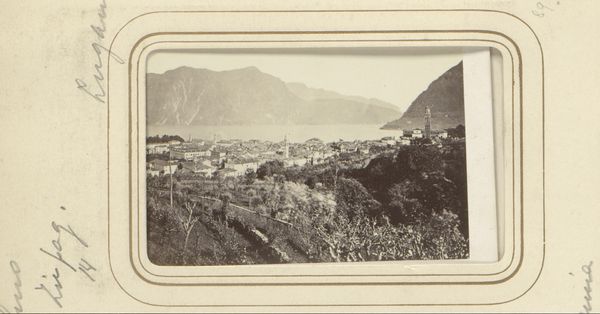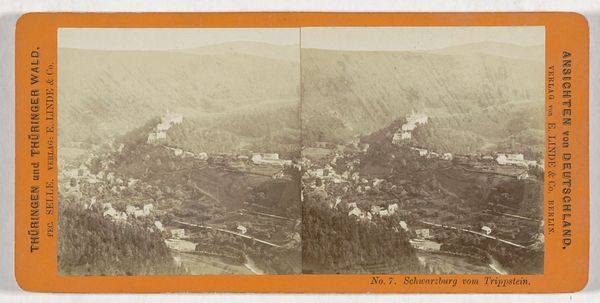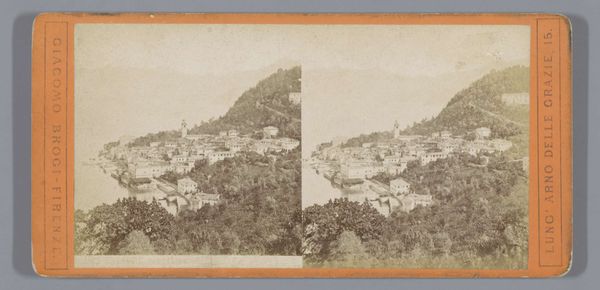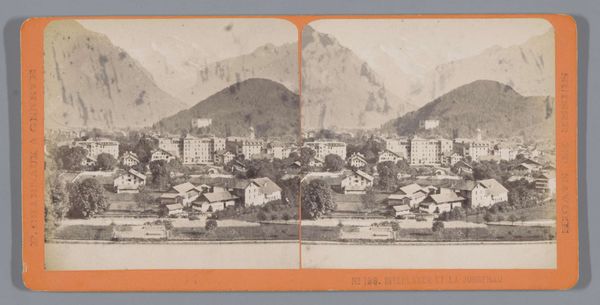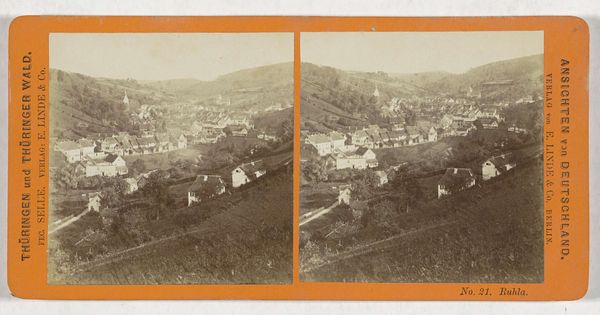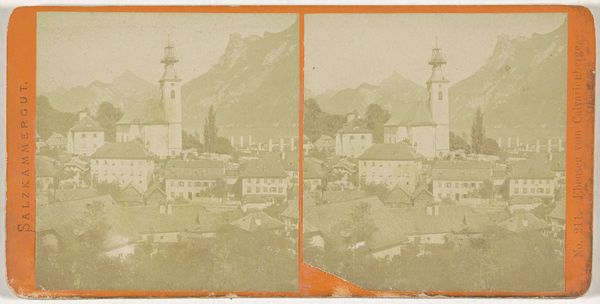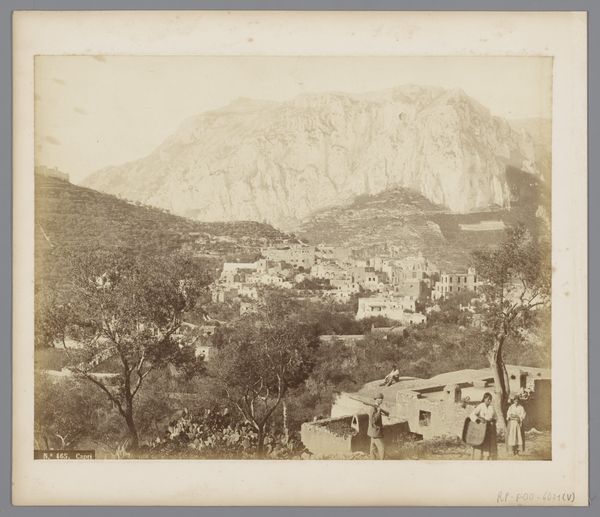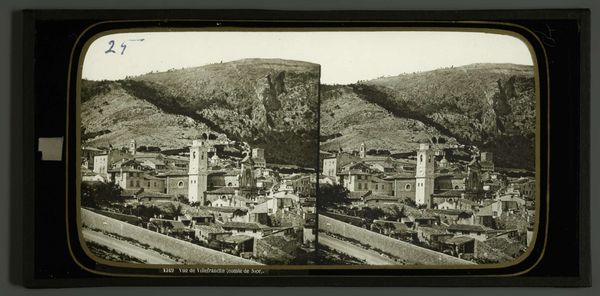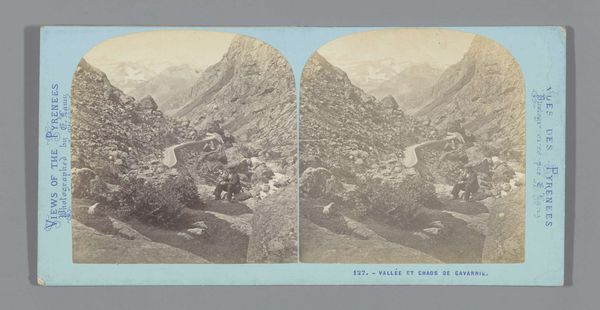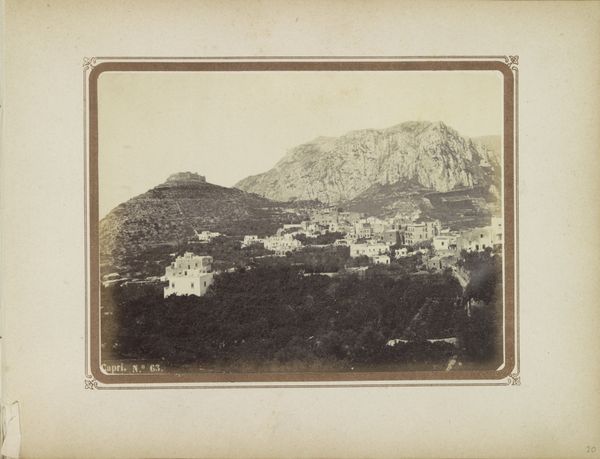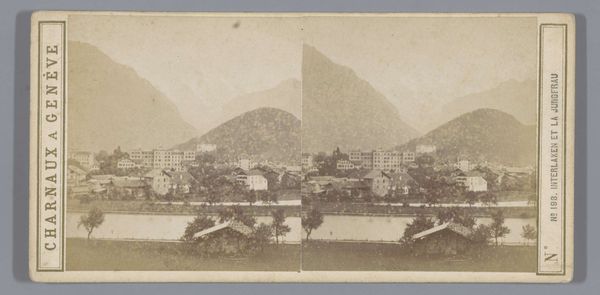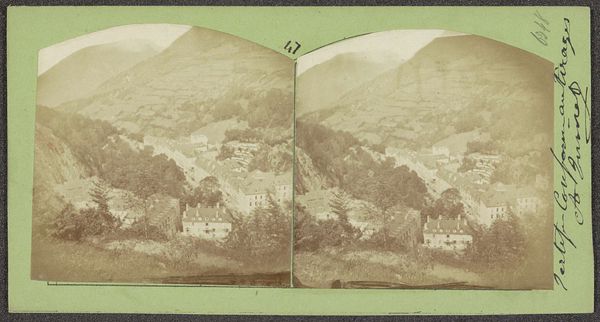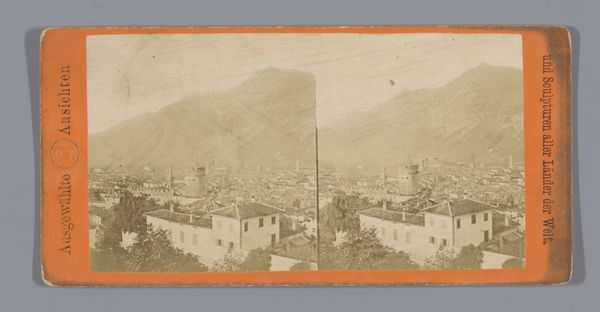
photography
#
landscape
#
photography
#
mountain
Dimensions: height 85 mm, width 170 mm
Copyright: Rijks Museum: Open Domain
Curator: Welcome! Let’s turn our attention to this captivating landscape photograph, entitled “Gezicht op Urtijëbi.” It’s attributed to the studio of Würthle & Spinnhirn and was likely created sometime between 1860 and 1900. Editor: Immediately, I’m struck by the sheer scale of this vista and also the way light diffuses the scene. There is something peaceful, yet strangely remote, about this work, like a faded memory. Curator: The composition indeed enhances this sense of tranquility. Note the careful arrangement of forms, from the foreground with its gentle slopes, leading the eye towards the clustered village nestled in the valley. Then onward to the majestic peaks dominating the distant horizon. The photographer has expertly used depth and tonal variation to create a harmonious whole. Editor: And yet, considering when this was created, one wonders about the narrative it presents of rural life and labour amidst rapid industrialisation in Europe. Are we seeing an idyllic portrayal designed to obscure the socioeconomic transformations unfolding at that time? Or does this image present the beginning traces of commercialized travel and photography impacting a traditional Alpine community? Curator: Perhaps a bit of both. The photograph does adhere to certain conventions of landscape photography prevalent in the 19th century, aiming to capture the sublime grandeur of nature. The subdued palette and meticulous details contribute to a sense of timelessness. Semiotically, the mountain functions almost as an objective correlative of human transcendence. Editor: But the buildings signal that a society occupies the space; they stake claim on a shared historical and geographic reality. Understanding who controlled the means of photographic production becomes pertinent here. Was Würthle & Spinnhirn framing an idealized vision of the Tyrol to suit bourgeois expectations? Whose story isn’t this photograph telling? Curator: That is a fair point. Nevertheless, we must acknowledge the skillful manipulation of light and shadow, the balance of horizontals and verticals, creating a visually compelling composition, irrespective of whatever subtexts exist. Editor: For sure, considering that photographic printing involved complex chemical processes—collodion, albumen, and so on—it represents a high-level technical expertise to bring that range and tonal depth out. A beautiful relic that is very suggestive, socially. Curator: A marvelous specimen indeed. The convergence of skill and subject matter has left us a fascinating study in composition and form. Editor: Yes, something to mull over on multiple levels. Thanks for joining me as we looked and reflected!
Comments
No comments
Be the first to comment and join the conversation on the ultimate creative platform.
